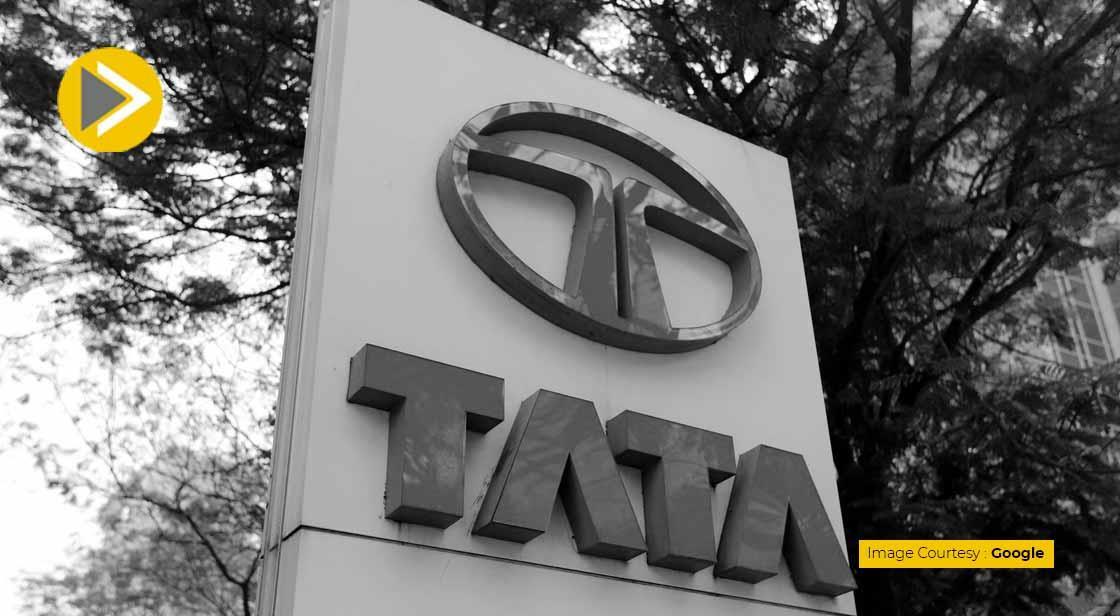New Tata Altroz 2025 to Debut Tomorrow: Major Design and Feature Upgrades Revealed

News Synopsis
Tata Motors is all set to launch the 2025 Altroz tomorrow, making it the first major update since the hatchback’s debut in 2020. The premium hatchback segment is heating up once again, especially after Tata introduced the Altroz Racer in 2024, which featured a powerful 118 bhp 1.2-litre turbo petrol engine.
This engine is expected to now be a part of the standard Altroz lineup.
Let’s dive into the top 5 things you must know before the official launch.
2025 Tata Altroz: Engine Options
India’s Only Hatchback with Four Powertrains
The updated Altroz is the only hatchback in its segment to offer four distinct engine configurations:
|
Engine Type |
Power |
Torque |
Transmission |
|
1.2-litre Naturally Aspirated Petrol |
87 bhp |
115 Nm |
5-speed MT / 6-speed DCT |
|
1.2-litre Turbo Petrol (Altroz Racer) |
118 bhp |
170 Nm |
6-speed MT |
|
1.5-litre Diesel |
89 bhp |
200 Nm |
5-speed MT |
|
1.2-litre CNG |
72.4 bhp |
103 Nm |
5-speed M |
2025 Tata Altroz: Exterior Design Upgrades
A More Premium and Bold Look
Tata has refreshed the Altroz with multiple styling enhancements:
-
A new all-black front grille
-
Twin-pod LED headlamps with sleek LED DRLs
-
Dual-tone bumpers with integrated LED fog lamps
-
Class-first flush door handles
-
Stylish new 16-inch alloy wheels
-
Connected LED taillights spanning the tailgate
-
New rear bumper with repositioned number plate housing
-
90-degree door opening retained for added accessibility
2025 Tata Altroz: Cabin and Interior Enhancements
Dual-Tone Interior with Enhanced Comfort
The cabin receives a premium update with a dual-tone dashboard and new beige upholstery.
-
Redesigned seats with added thigh support
-
Rear bench now features an extended seat squab
-
Two new adjustable headrests and a fold-down armrest with cupholders
-
Premium two-spoke flat-bottom illuminated steering wheel
-
Toggle switches + button controls for intuitive handling
2025 Tata Altroz: Features & Tech
Tech-Packed for the Modern Driver
The new Altroz is loaded with segment-leading features:
-
10.25-inch touchscreen infotainment system by Harman
-
Wireless Android Auto & Apple CarPlay
-
10.25-inch digital instrument cluster with nav display (first in segment)
-
Wireless phone charging
-
Touch panel climate control
-
Single-panel electric sunroof
-
Auto-folding ORVMs, driver seat height adjust, and cruise control
2025 Tata Altroz: Safety & Build Quality
5-Star Global NCAP Safety and New Enhancements
Built on Tata’s Alpha Architecture, the Altroz has retained its 5-star Global NCAP rating and now includes:
-
Six airbags (standard)
-
360-degree surround camera
-
Blind spot monitoring
-
Tyre Pressure Monitoring System (TPMS)
-
3-point seat belts for all passengers
About Global NCAP Safety
Global NCAP (New Car Assessment Programme) is an independent organization dedicated to promoting vehicle safety worldwide. It acts as a platform for cooperation among various regional New Car Assessment Programmes (NCAPs) and conducts independent crash tests and safety evaluations, particularly in emerging markets where safety regulations might be weaker
Key Aspects of Global NCAP:
-
Mission and Vision:
-
Goal: To significantly reduce road deaths and serious injuries globally by promoting the adoption of the UN's most important vehicle safety standards.
-
Advocacy: It serves as a consumer watchdog, providing independent information on the safety performance of new cars and encouraging manufacturers to meet higher safety standards.
-
Part of Towards Zero Foundation: Global NCAP is a major program of the Towards Zero Foundation, a UK-registered charity working internationally to support the UN Decade of Action for Road Safety.
-
-
How Global NCAP Tests Vehicle Safety:
-
Crash Tests: Global NCAP employs rigorous crash tests that simulate real-world accident scenarios. These tests evaluate how well a car protects its occupants during a collision.
-
Frontal Offset Crash Test: This is a primary test where a car crashes into a deformable barrier at 64 km/h, with only 40% of the car's front impacting the barrier. This simulates a common real-world collision between two cars of the same weight.
-
Side Impact Crash Test: Assesses the safety of passengers when hit from the side.
-
Side Pole Impact Test: (Required for higher star ratings) Evaluates head protection in a side impact with a rigid pole.
-
-
Dummy Readings: Crash test dummies, representing adults and children, are placed in the vehicle. Sensors on these dummies record injury measures in critical body areas (head, neck, chest, etc.).
-
Safety Features Assessment: Points are awarded for the presence and performance of crucial safety equipment, such as:
-
Airbags (frontal, side, curtain)
-
Seatbelt reminders (for front and rear occupants)
-
Electronic Stability Control (ESC)
-
ISOFIX anchorages for child seats
-
Anti-lock Braking System (ABS)
-
Pedestrian protection systems (for higher ratings)
-
Advanced Driver-Assistance Systems (ADAS) like Autonomous Emergency Braking (AEB) and Speed Assist Systems (SAS) are increasingly considered for higher ratings.
-
-
-
The Star Rating System:
-
Global NCAP provides a star-based safety rating system (from 0 to 5 stars) for both Adult Occupant Protection and Child Occupant Protection.
-
Higher stars indicate better safety performance.
-
Adult Occupant Protection: Evaluates structural integrity, airbag effectiveness, seatbelt performance, and whiplash mitigation.
-
Child Occupant Protection: Assesses the compatibility of child restraints, ISOFIX presence, and overall effectiveness of child safety features. It often uses child dummies representing an 18-month-old and a 3-year-old.
-
Star Capping: Even if a car scores well in some areas, it can be capped at a lower star rating (e.g., 0-star) if dummy readings indicate a high risk of life-threatening injury in a critical body region in either frontal or side impacts, or if basic safety features are lacking.
-
-
Significance of Global NCAP Ratings:
-
Consumer Empowerment: Helps consumers make informed decisions when buying a new car, prioritizing safety alongside other factors.
-
Industry Benchmark: Serves as a trusted industry standard for car safety, encouraging manufacturers to improve vehicle design and engineering.
-
Promotes Safety Features: Pushes manufacturers to equip cars with essential safety features as standard, even in budget segments.
-
Impact on Emerging Markets: Global NCAP has had a particularly significant impact in emerging markets like India and Africa, where it launched campaigns like #SaferCarsForIndia and #SaferCarsForAfrica to push for higher safety standards.
-
Global NCAP's Work in India and Transition to Bharat NCAP:
-
#SaferCarsForIndia Campaign (2014-2024): Global NCAP launched this campaign in 2014 to independently crash-test popular cars sold in the Indian market. Over the years, it tested more than 60 models, significantly raising awareness and prompting Indian automakers to improve the safety of their vehicles. This campaign has been instrumental in the rise of 5-star rated cars in India.
-
Impact: The campaign's results, often highlighting poor safety standards of some popular models, led to public outcry and encouraged manufacturers like Tata Motors and Mahindra to prioritize safety, achieving multiple 5-star ratings.
-
Bharat NCAP (BNCAP): Recognizing the success of Global NCAP's efforts and the growing demand for safer cars, the Indian Ministry of Road Transport and Highways (MoRTH) launched its own indigenous crash testing program, Bharat NCAP, in October 2023.
-
Transition: Global NCAP announced that it would conclude its funded testing under the #SaferCarsForIndia project by the end of 2024, handing over the reins to Bharat NCAP. Global NCAP continues to offer technical support and know-how to Bharat NCAP through MOUs. This aims to avoid confusion and promote a unified approach to vehicle safety in India.
Conclusion: A Stronger Comeback in the Hatchback Segment
The 2025 Tata Altroz marks a significant evolution in the premium hatchback space, reinforcing Tata Motors’ commitment to innovation, safety, and customer-centric design. With a bold new look, segment-first features, and an impressive range of four powertrain options—including petrol, diesel, turbo-petrol, and CNG—the updated Altroz offers something for every type of driver.
The inclusion of a 10.25-inch touchscreen infotainment system, digital instrument cluster, and advanced safety tech like six airbags and a 360-degree camera demonstrates Tata’s focus on blending performance with premium convenience.
Moreover, the revamped interiors with improved seat comfort and ergonomic design cater to urban buyers seeking practicality without compromising on luxury. With its 5-star Global NCAP rating still intact, the Altroz remains one of the safest cars in its segment. This comprehensive facelift positions the Altroz as a serious contender in the hatchback market and reflects Tata Motors’ ambition to set new benchmarks in India's automotive industry.









